Australia's NH90 Helicopter Nightmare Is Finally Ending
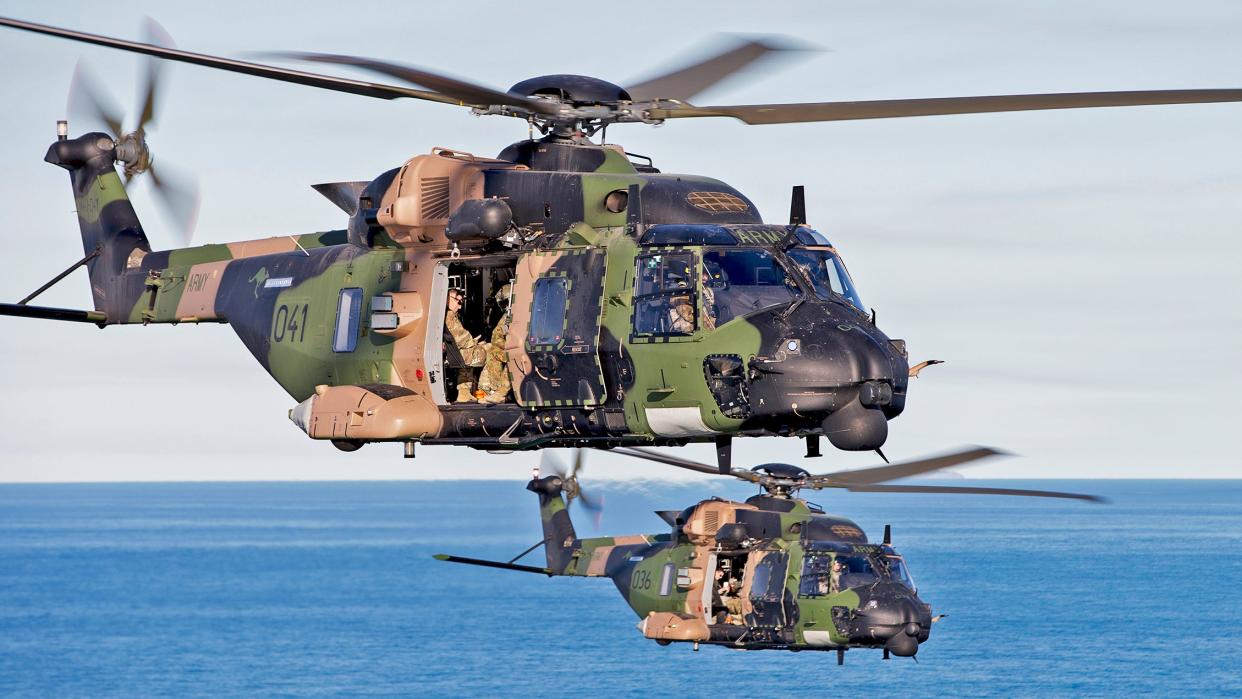
The Australian Defense Force has officially ended its painful experience with the European-made NHIndustries NH90 Tactical Transport Helicopter, designated MRH90 Taipan in Australian service. The nation’s Minister of Defense Richard Marles announced on September 29 that the helicopters will never fly again in Australian service.
The decision to withdraw all of the Australian Defense Force’s surviving 45 NH90 helicopters from service 15 years earlier than originally forecast is the result of almost 15 years of rolling budget blow-outs, fleet groundings, and two major crashes that forced the Australian Army to admit defeat and retire the type immediately.
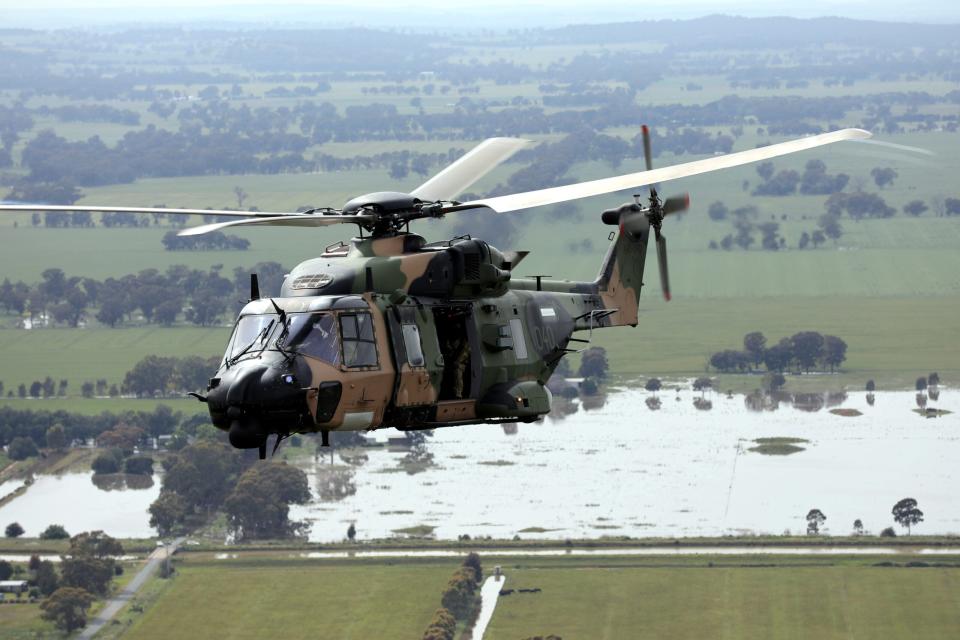
The Australian Army had intended to keep flying its multi-billion-dollar fleet of relatively new NH90s until December of next year, but the fatal crash of one of the helicopters in late July saw the Australian Army decide to cut its losses with the barely operational aircraft. Instead, it will concentrate its efforts on introducing new Sikorsky UH-60M Black Hawks bought under an urgent program to get Australia’s soldiers back in the air. The decision to switch to the UH-60M is something that The War Zone reported on at the time.
https://www.twitter.com/PeterDutton_MP/status/1469099478871203841?s=20
Three brand-new UH-60Ms, the first of 40 bought by the Australian government as an emergency acquisition via the U.S. Foreign Military Sales program, were delivered to the Australian Army’s elite 6th Aviation Regiment (Australia’s equivalent of the U.S. Army’s 160th Special Operations Aviation Regiment) in western Sydney in early August.
The emergency Black Hawk acquisition was made necessary by the complete operational failure of the Australian Army’s relatively new fleet of NH90 Tactical Transport Helicopters, 47 of which were acquired over three separate orders in the 2000s.
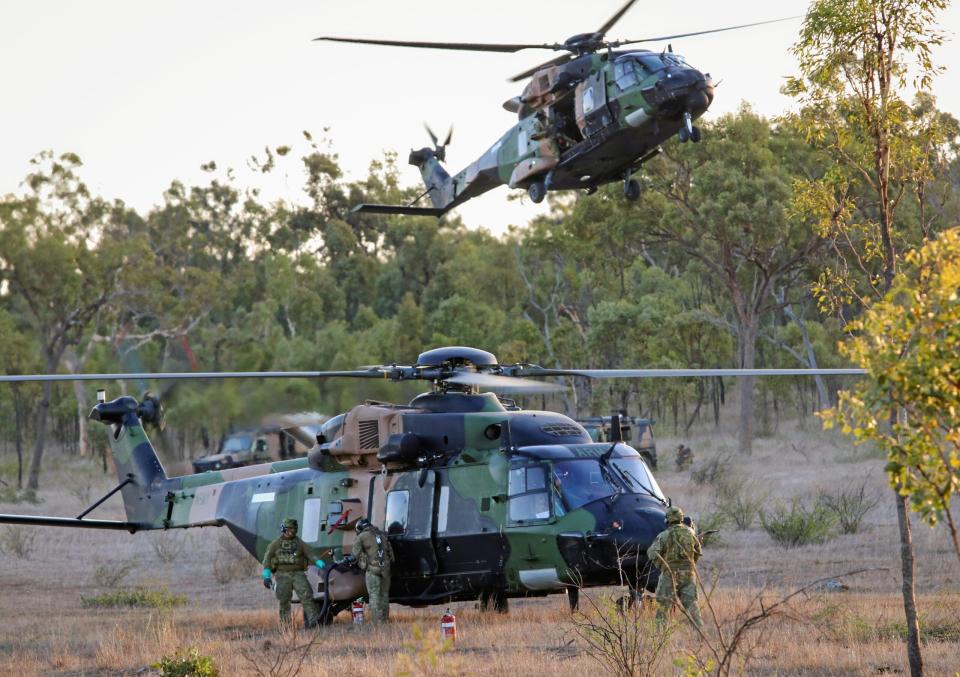
The NH90s were intended to equip the Australian Army’s battlefield mobility and special operations aviation support squadrons and the Royal Australian Navy’s naval logistics helicopter support squadron.
Sadly, there were no celebrations at the 6th Aviation Regiment to toast the arrival of the new Black Hawks. The Sikorsky machines touched down at Sydney’s Holsworthy Barracks within days of the unit’s subordinate 173rd Aviation Squadron losing four aviators when one of its NH90s crashed into the Coral Sea, between tourist resorts on Queensland’s famous Great Barrier Reef. The mishap occurred during a combined special operations aviation activity with U.S. Army special operations helicopters in the opening phase of the enormous international Exercise Talisman Sabre 2023.
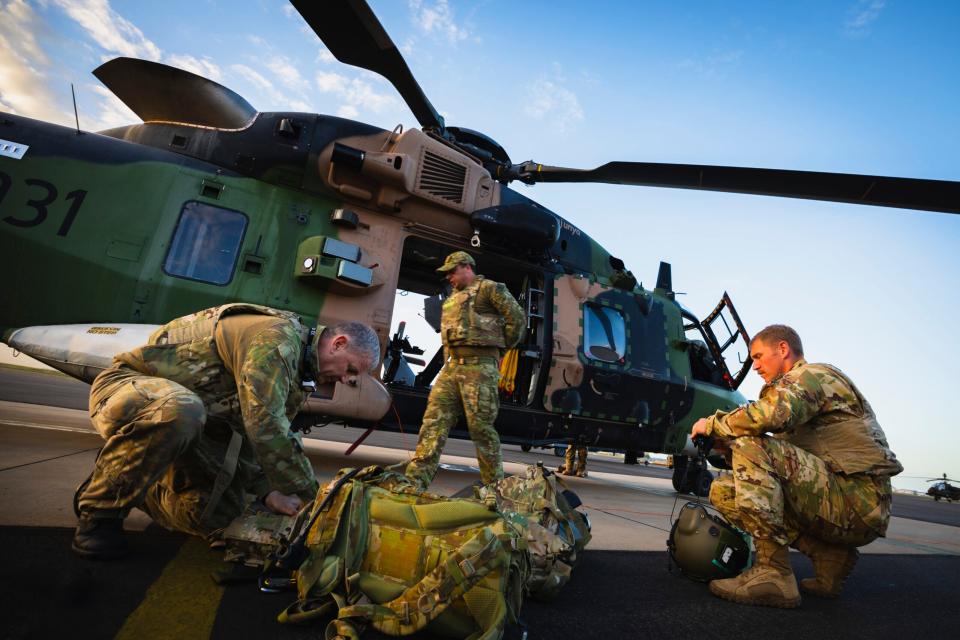
The loss of the 6th Aviation Regiment NH90 crew cast a tragic pall over the Australian Army’s MRH90 Rapid Replacement Project which had been working overtime to deliver the first of the new UH-60Ms and lay the groundwork for the withdrawal of the problematic Taipans from service by December 2024.
https://www.twitter.com/ChiefAusArmy/status/1707190626713030842?s=20
The fatal Great Barrier Reef crash saw the Australian Army immediately suspend flight operations for its 38 surviving in-service NH90s on July 29. This effectively stripped the Australian Defense Force of its medium-helicopter air-mobility capacity and grounded the elite 6th Aviation Regiment and its sister NH90 flying unit, A Squadron, 5th Aviation Regiment.
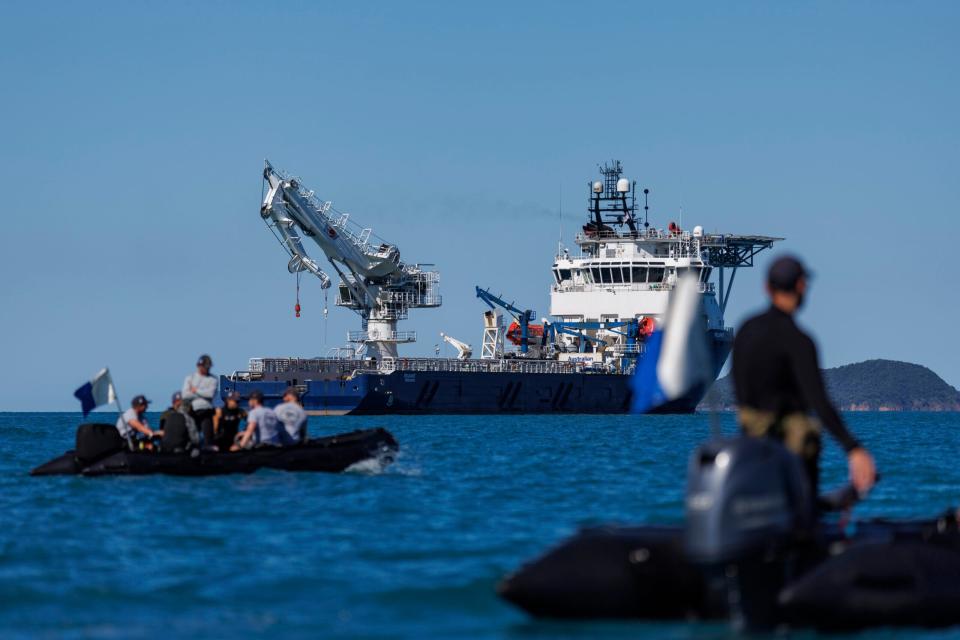
It was the second loss of an Australian Army Aviation NH90 in three months, following on from the write-off of another 6th Aviation Regiment/173rd Aviation Squadron Taipan in March. That helicopter ditched into the ocean during counterterrorism training at Jervis Bay, south of Sydney, with 10 aircrew and special forces personnel embarked. The incident could have been catastrophic, but luckily did not result in any serious injuries.
In a tragic twist, the fatal Great Barrier Reef NH90 crash and the arrival of the first three new UH-60Ms came only 18 months after the Australian Army retired its old fleet of 1980s-era S-70A-9 Black Hawks (the international designation for Australian UH-60As) in December 2021. These helicopters had been kept in service to fill the high-priority special operations aviation support mission while Australia continuously struggled to make the MRH90 fully operational in that role.
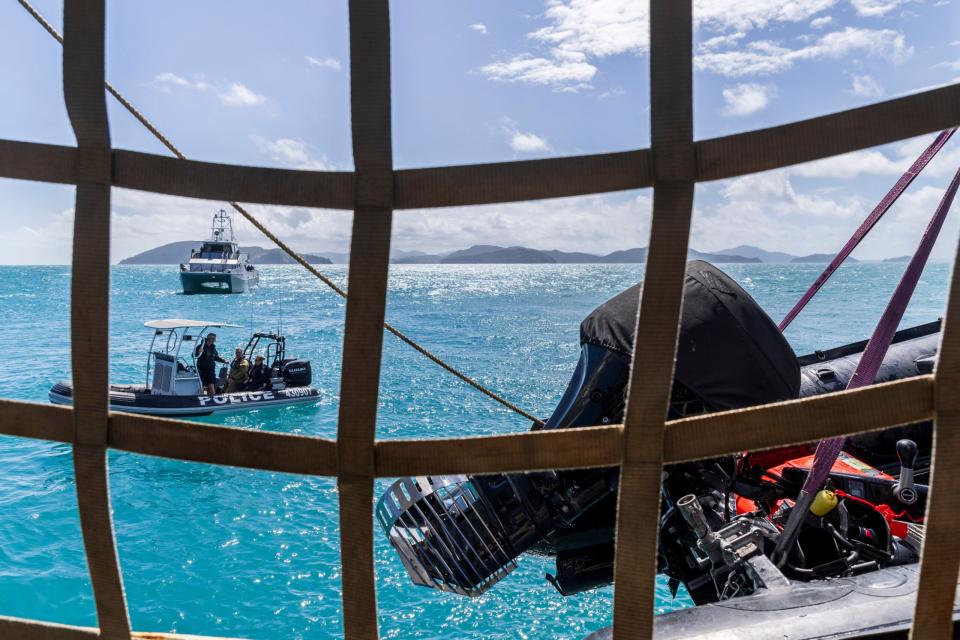
The old S-70A-9 Black Hawks had served Australia well, having been the backbone of the Australian Defense Force’s battlefield mobility helicopter fleet since 1989. For more than 30 years, they flew the bulk of the airmobile missions in Australia’s 12-year peacekeeping operation in East Timor, as well as almost all of Australia’s domestic military rotary-wing support and counterterrorism preparations.
However, the failure to certify the NH90 to fill the key special operations aviation support mission forced Australian Army Aviation to finance a series of life extensions to a reduced fleet of 22 S-70A-9s. This was supposed to keep these tired airframes flying until the NH90 could fully assume the critical counterterrorism and special recovery missions.
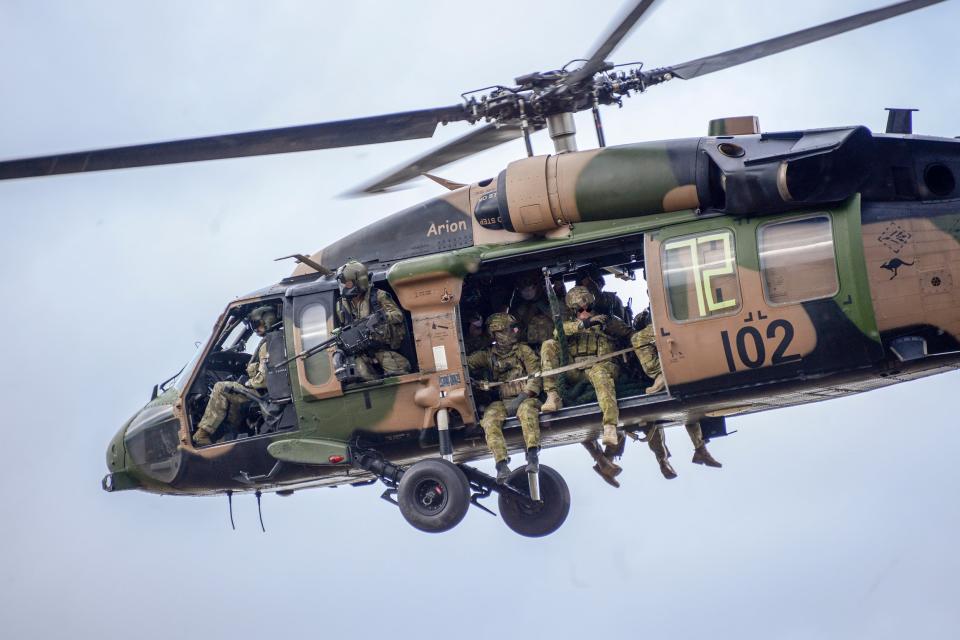
The NH90’s complete failure to fill the old S-70A Black Hawks’ combat-proven place eventually forced the Australians to accept the unpalatable truth — that no matter how much they spent or how many personnel they applied to the problem, the NH90 would never meet their key requirements.
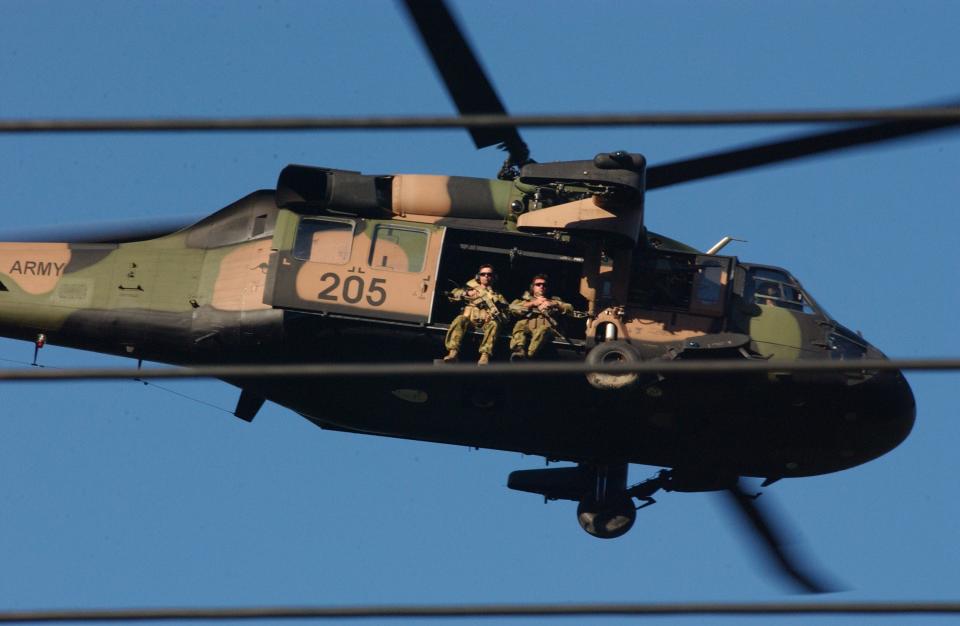
The Australians were left with no choice but to accept the massive loss on their investment in the NH90 and replace the fleet with new-build U.S.-Army-spec UH-60Ms, the aforementioned first three of which are now already flying with the 6th Aviation Regiment.
Over the next year and a half, the 6th Aviation Regiment’s two operational flying squadrons — the 171st Aviation Squadron, which flew the old S-70A Black Hawks until their retirement in 2021, and the 173rd Aviation Squadron, which had been flying the NH90 TTH in the special operations aviation support role until the retirement announcement — will progressively re-equip with the new UH-60M. These helicopters are being airlifted to Australia after rolling off the production line at West Palm Beach, Florida.
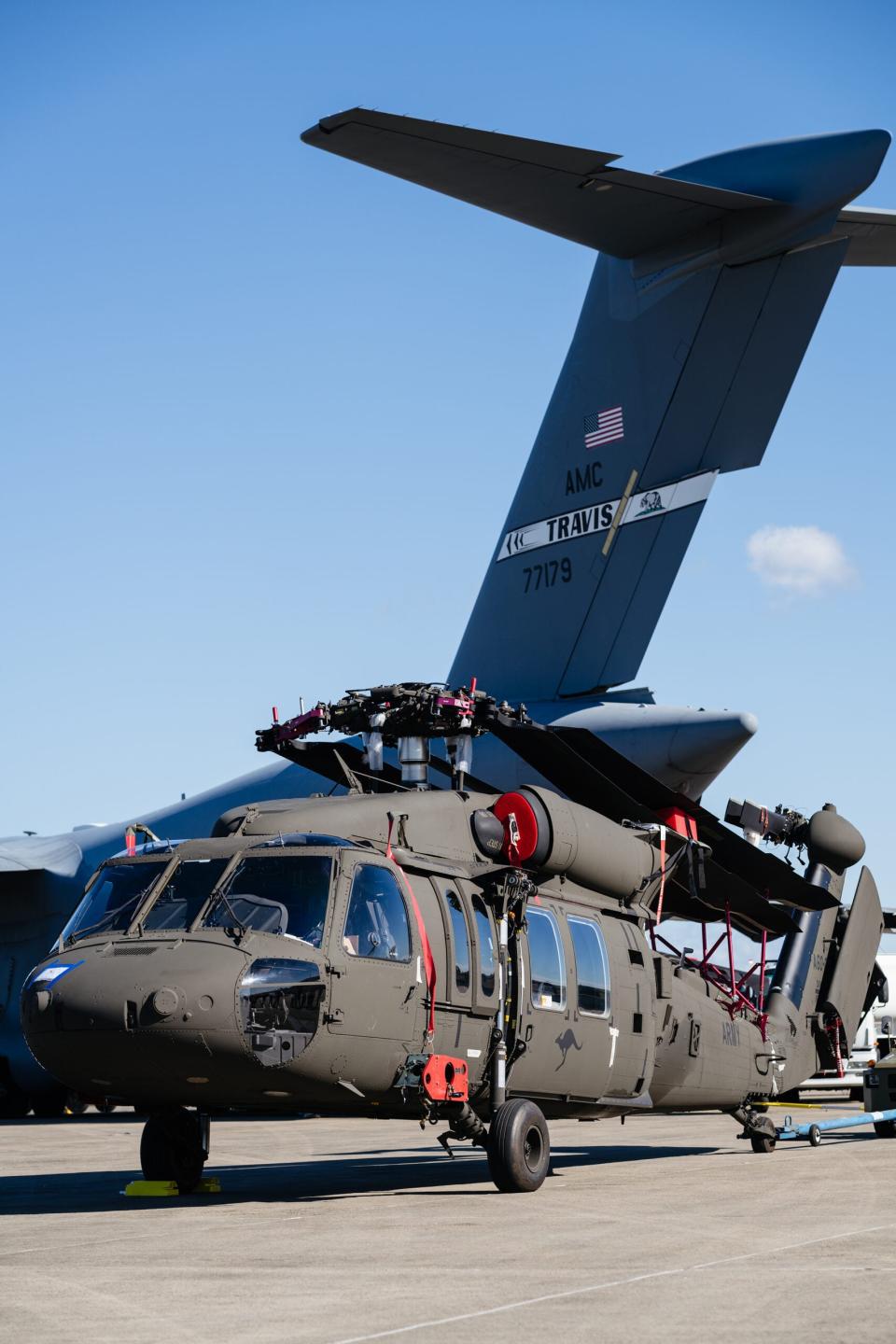
The 6th Aviation Regiment, based at Luscombe Army Airfield within Special Operations Command – Australia’s sprawling Holsworthy Barracks in Western Sydney, has priority for the new Black Hawks. But the Australian Army is also planning on basing some of the new UH-60Ms 650 miles north of Sydney at its Army School of Aviation in southeast Queensland from early 2025 onwards.
The new UH-60Ms will plug some of the many operational shortfalls in the Australian Defense Force, particularly the Australian Army’s limited capacity to conduct air mobility and air assault operations. These mission deficits arose primarily from the NH90’s lack of availability and design limitations that prevented it from performing specific missions within the battlefield mobility helicopter mission spectrum.
Things got so bad and NH90 availability got so low, that the Australians were able to pool unspent funding earmarked for NH90 flying hours to buy four additional CH-47F Chinooks from the U.S. Army to get their soldiers back in the air, with two delivered in 2021 and another two delivered in 2022.
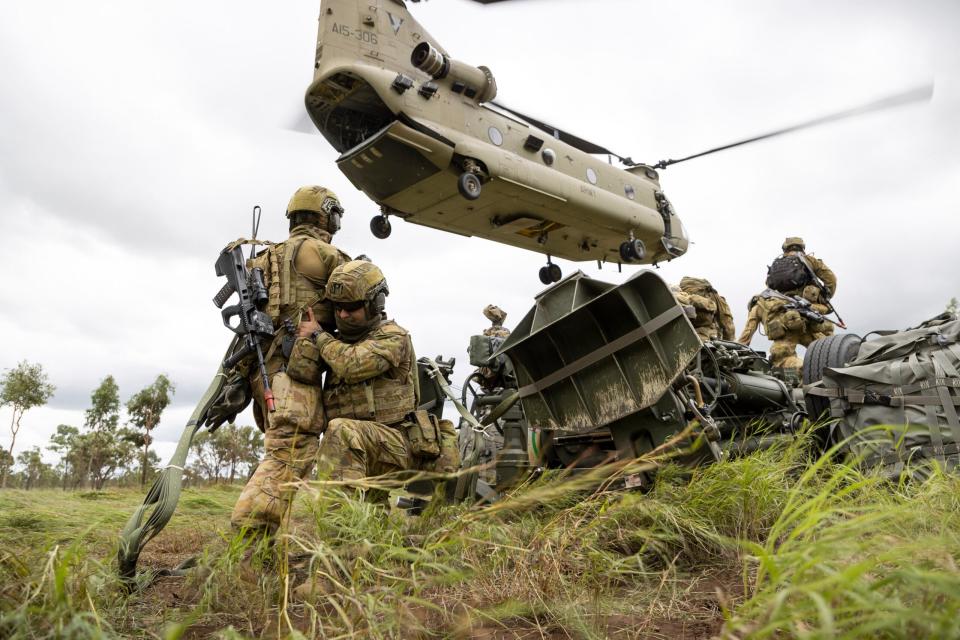
Expanding the Chinook fleet to 14 aircraft helped, particularly for the high-readiness 3rd Brigade based near the 5th Aviation Regiment Chinooks at Townsville on Australia’s far northern Pacific coast. At the same time, the Australian Defense Force was also forced to lease three (later increased to six) AW139 helicopters to guarantee helicopter medical evacuation support for its ground forces and flight time for its aircrews, which was degrading rapidly due to lack of flyable NH90s.
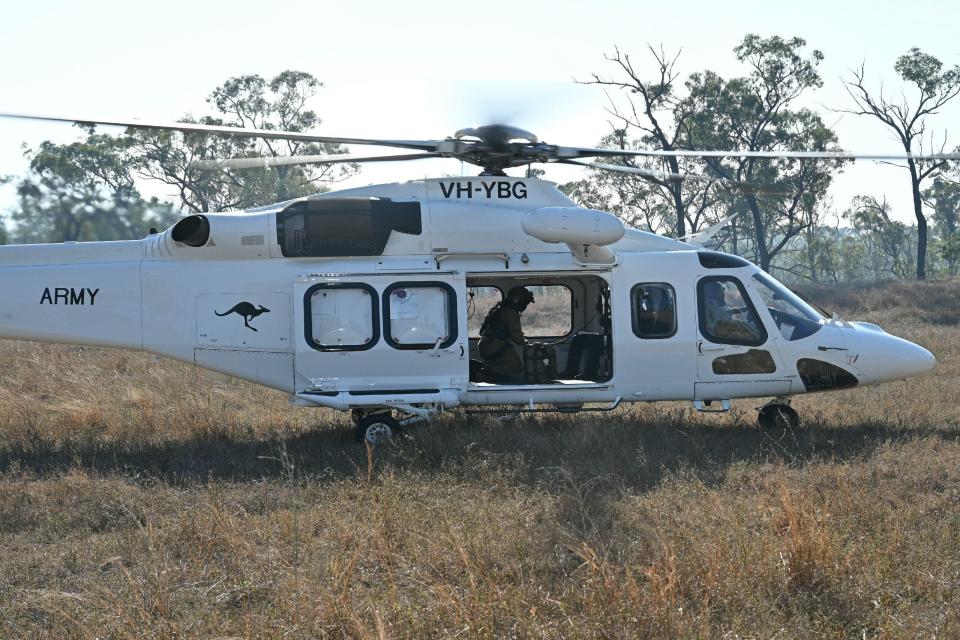
The Royal Australian Navy, whose 808 Squadron was flying six NH90s in the naval logistics role embarked on Australia’s Supply class auxiliary replenishment tankers and Canberra class amphibious assault ships, was the first Australian service to lose patience with its NH90s.
After only a few years of operation, the RAN acted, withdrawing the type from service in April 2022 after being unable to get the expensive helicopter to meet the required readiness level of three concurrent single-airframe embarked ‘flights’ at sea.
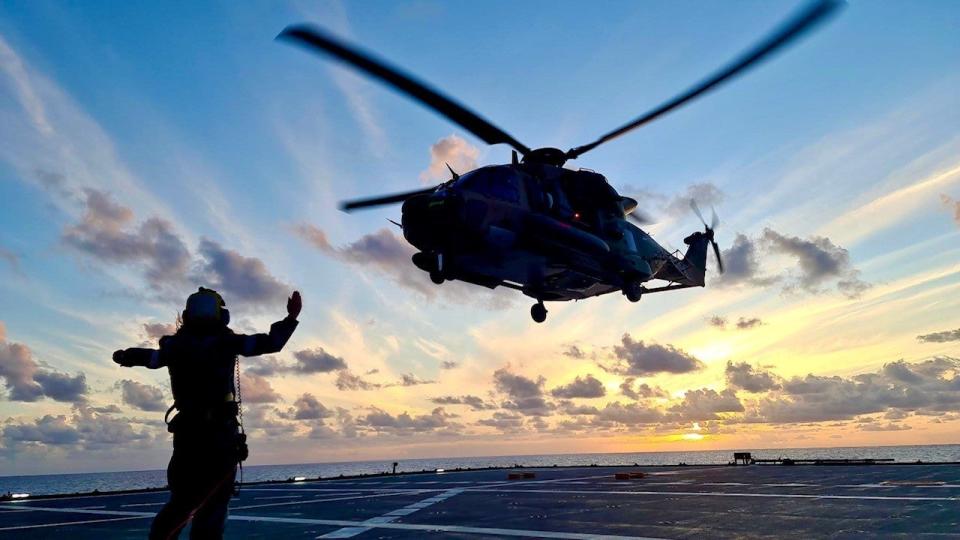
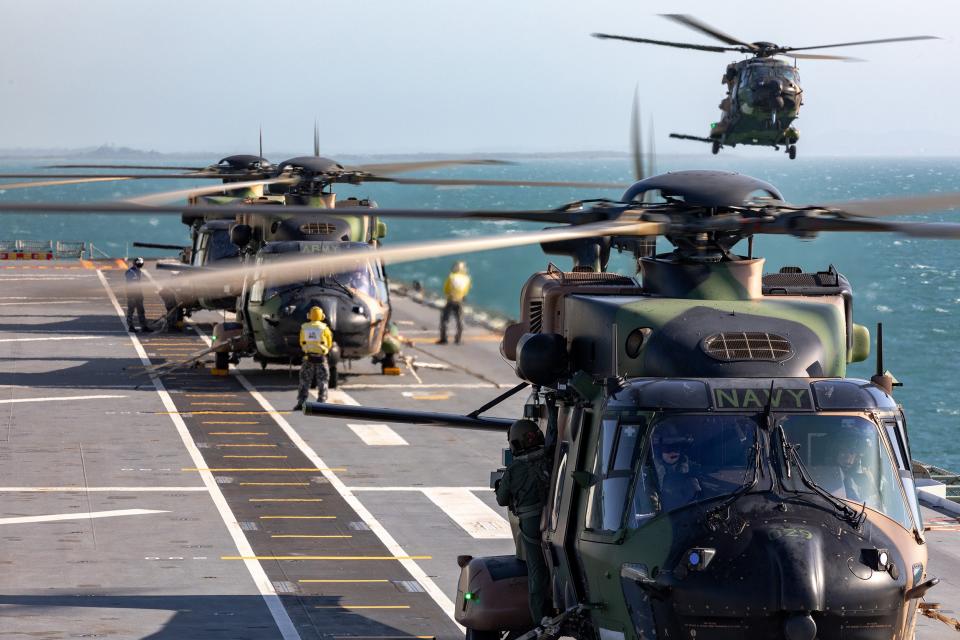
Currently, the Royal Australian Navy is fulfilling its critical supply helicopter mission with an ad-hoc transfer of advanced Sikorsky MH-60R ‘Romeos’ from the Fleet Air Arm’s naval combat helicopter cadre while it awaits the arrival of 13 additional Romeos ordered from Sikorsky in 2022 to fill the capability gap.
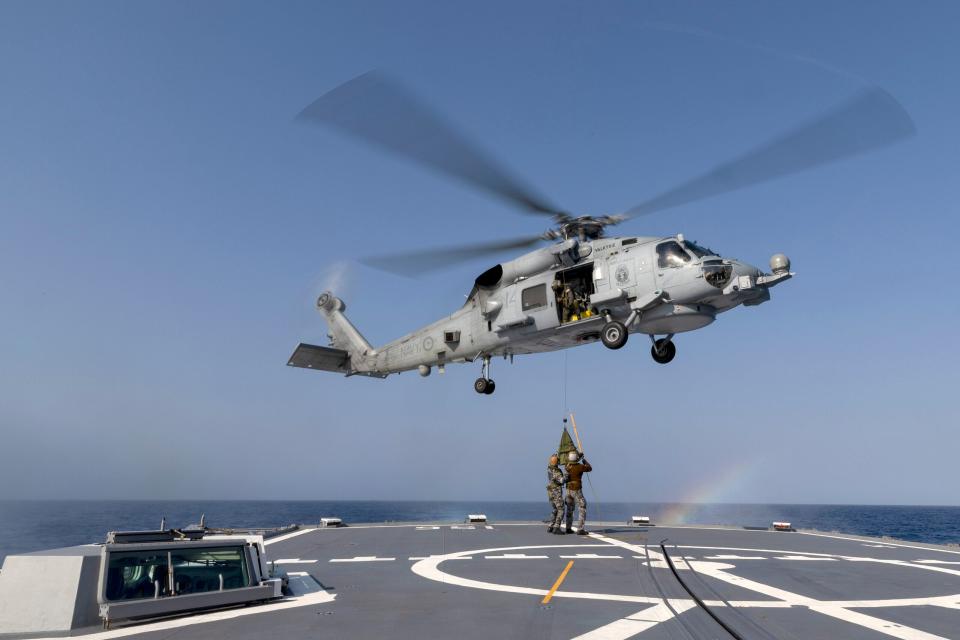
The irony of the entire Australian NH90 fiasco is that the nightmare helicopter was originally selected in preference to the UH-60M Black Hawk under the Air 9000 Australian Additional Battlefield Mobility Helicopter program back in 2004-05, apparently due to political and industrial considerations rather than operational ones.
According to the Australian National Audit Office’s (Australia’s financial and governance oversight office) scathing 2014 ANOA Audit Report No. 52, which publicly revealed the alarming list of NH90 performance, reliability, capability, and support deficiencies, the Australian Army had actually recommended buying the UH-60M Black Hawk in the first place but was overruled by the minister of defense at the time.
https://www.youtube.com/watch?v=sYcO7hD9JwE
Major problems with the NH90’s engines, floor, seats, ramp, and overall design saw the Australian government and prime contractor Australian Aerospace (now Airbus Group Australia) renegotiating their agreements, with the NH90 undergoing three separate ‘baseline configurations’ over five years.
The performance of the NH90 was so far below requirement that the first 15 production helicopters even had to be returned to the prime contractor for remanufacture in the early 2010s.
Some of the problems with the NH90 seemed almost comically bad if they were not so troubling on national security grounds. The floors deformed when fully equipped soldiers walked on them, the cargo-bay door design made it completely impossible to man the door-mounted guns while troops were inserted or extracted, and the winch system was in consumer terms simply ‘not fit for purpose.’
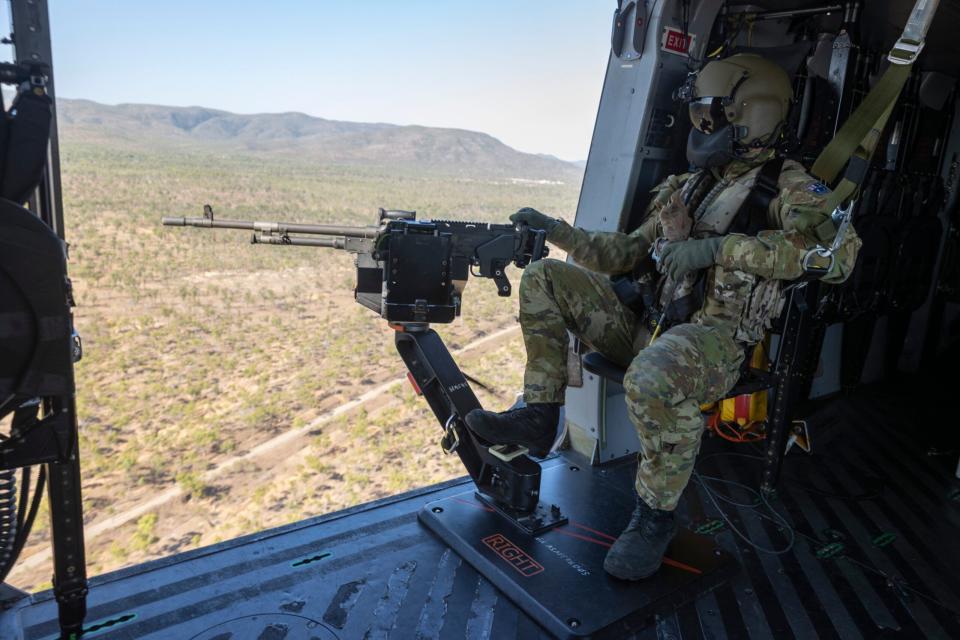
Constant damage to the antenna array on the NH90’s lower fuselage saw the Australian Army limit the helicopter to operating only from landing zones that had been inspected and cleared of any obstacles higher than six inches (160mm). That, combined with the helicopter’s inability to flare on landing effectively made the NH90 non-operational in the air assault or air-mobility mission.
The ANOA Report No. 52 also revealed that the aggregate cost of NH90 acquisition had ballooned out to AUS$65 million per aircraft, approximately US$60 million at the time, or almost four times the cost of a new UH-60M Black Hawk.
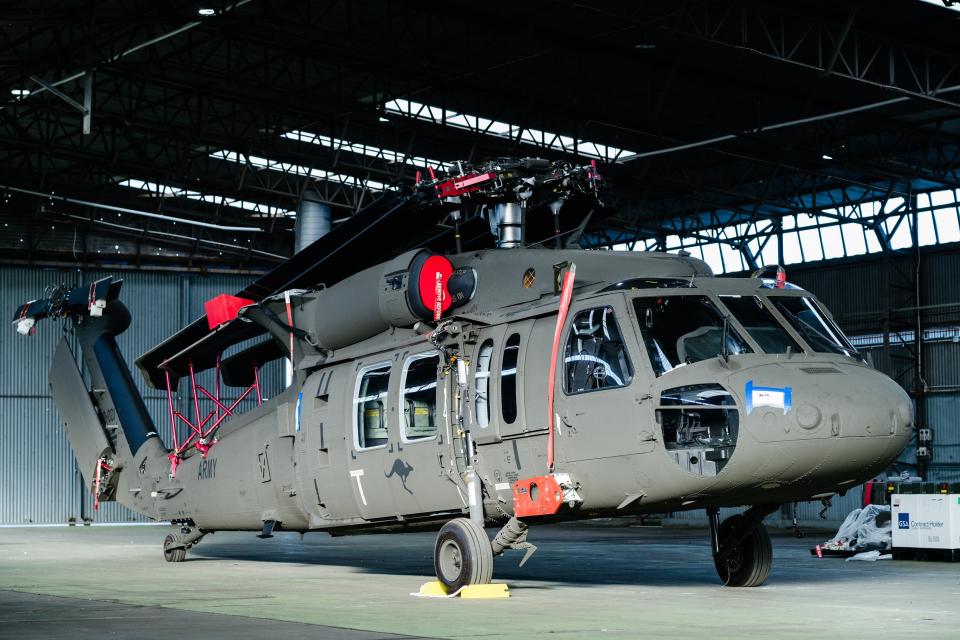
While massive financial and personnel investment saw the NH90’s readiness improve, and its ability to fly missions expand, ongoing technical and safety issues with the helicopter offset the gains. Effectively, the Australian Army was left with a very limited medium battlefield mobility helicopter capacity in the latter half of the 2010s, as well as a rolling series of operational restraints and outright groundings.
The NH90 became the Australian Army’s ‘bad news bird’ with a steady flow of flight restriction orders culminating in the extremely embarrassing grounding of the entire fleet just as Australia’s international Exercise Talisman Sabre 2019 kicked off that July.
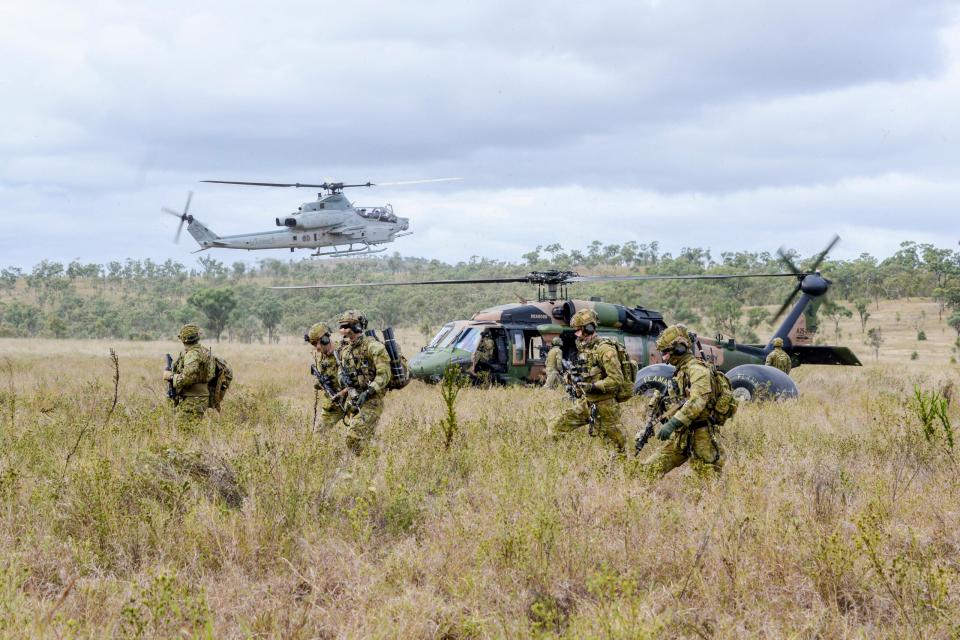
Worse, the Australians were forced to spend even more money to keep their old S-70A-9 Black Hawk fleet flying to fill the critical capability gaps left by the NH90’s inability to fly the missions the Australian Army assigned it.
Australia’s S-70As were originally meant to be retired in 2011, but the NH90 problems forced the Australians to conduct an expensive upgrade on its Black Hawks to extend their service life by four years out to 2014 to cover the shortfall.
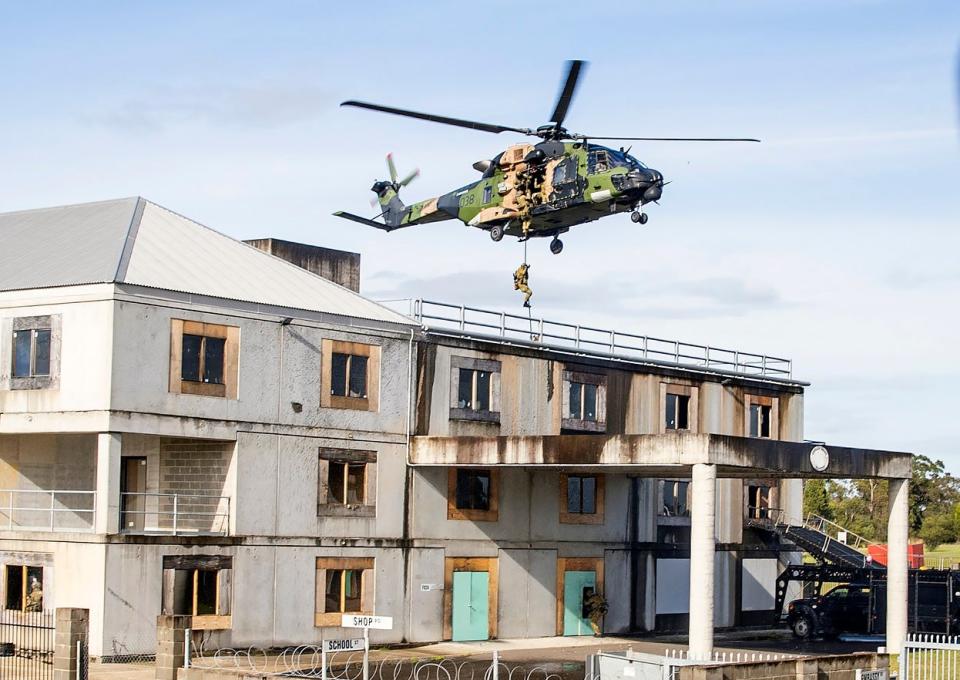
But four years were not enough. A second Black Hawk life extension was approved in 2014, with more funding to keep 22 S-70As flying the special operations aviation support mission until 2017. By that time the entire Australian battlefield mobility helicopter fleet was supposed to have been flying the NH90. This also didn’t happen.
In the end, with the help of hundreds of millions of dollars, the S-70A-9 Black Hawk flew on for the Australian Army until December 2021, a full 10 years beyond its original withdrawal-from-service date.
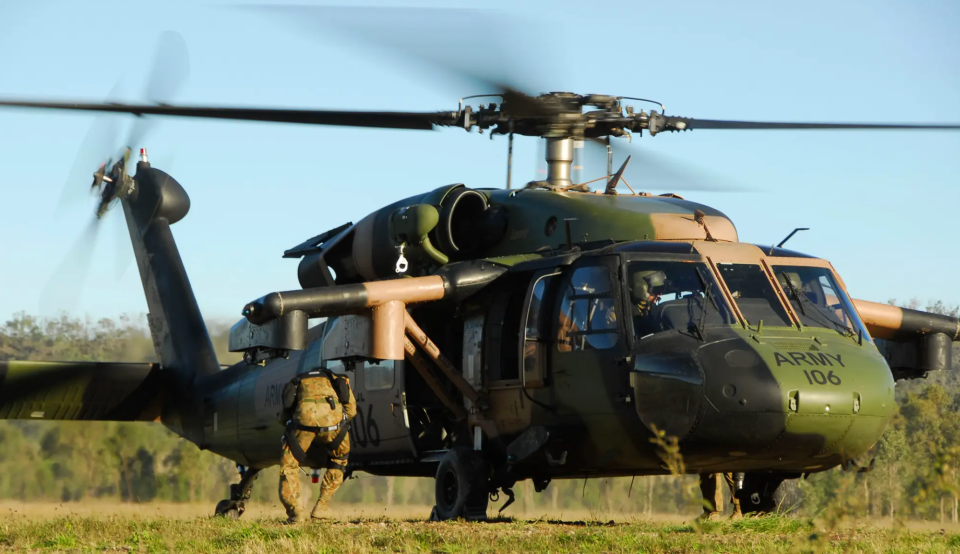
The retirement of the S-70As was, however, not the end of the Australian Black Hawk story. During the S-70A-9’s retirement ceremony in December 2021, the Australian government officially admitted defeat in its expensive wrestle with the NH90, announcing the Euro helicopter’s expedited replacement with a new fleet of UH-60Ms to fill the original Black Hawk’s battle-proven place.
Walking away from a AUS$3.5-billion direct investment and almost 20 years of personnel training and industrial support was not easy for the Australians.
Rumors that the Australian Army had finally lost patience with its expensive fleet of nonperforming NH90s first emerged in late 2015. It was then that Australian Army Aviation officers were reported to be cruising the U.S. helicopter market with a shopping list clearly focused on special operations. In particular, they were looking for a special operations helicopter that could undertake the NH90’s tactical assault team insertion mission.
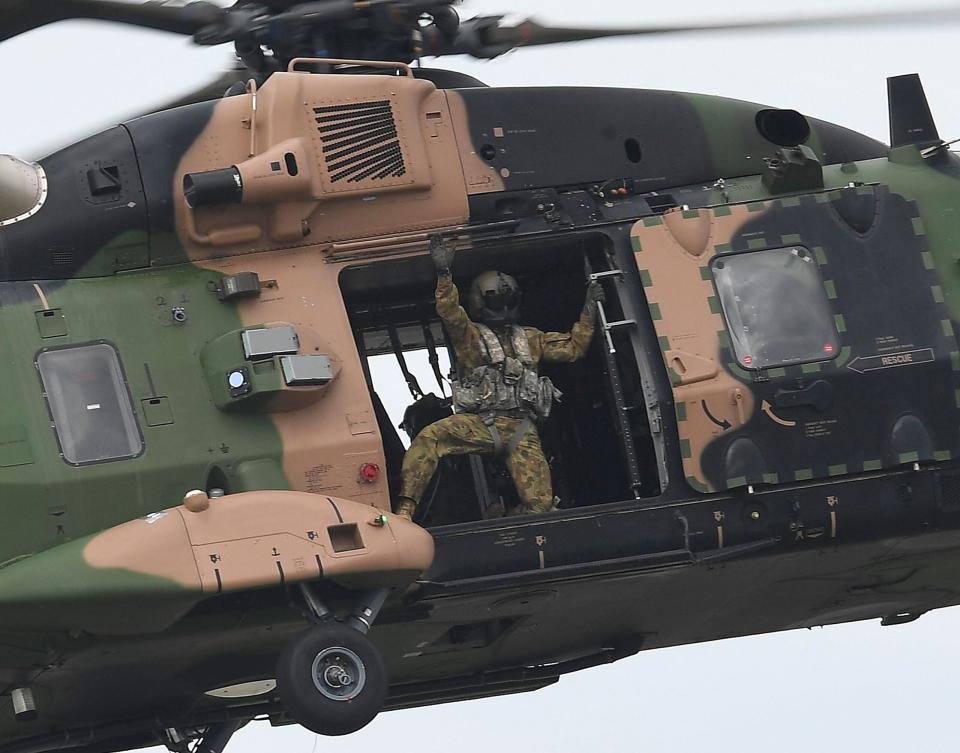
But the final straw was the fleet-wide grounding of the entire Australian Defense Force fleet of 47 NH90s in mid-2021. A major issue with the aircraft’s digital maintenance management software completely derailed the already low confidence that the Australians had in their fleet.
To add insult to injury, the software issue meant that the NH90 fleet was out of Exercise Talisman Sabre for the second time in 2021. The aircraft was becoming a habitual embarrassment for the Australian Army in front of its international partners during its showcase combined maneuvers.
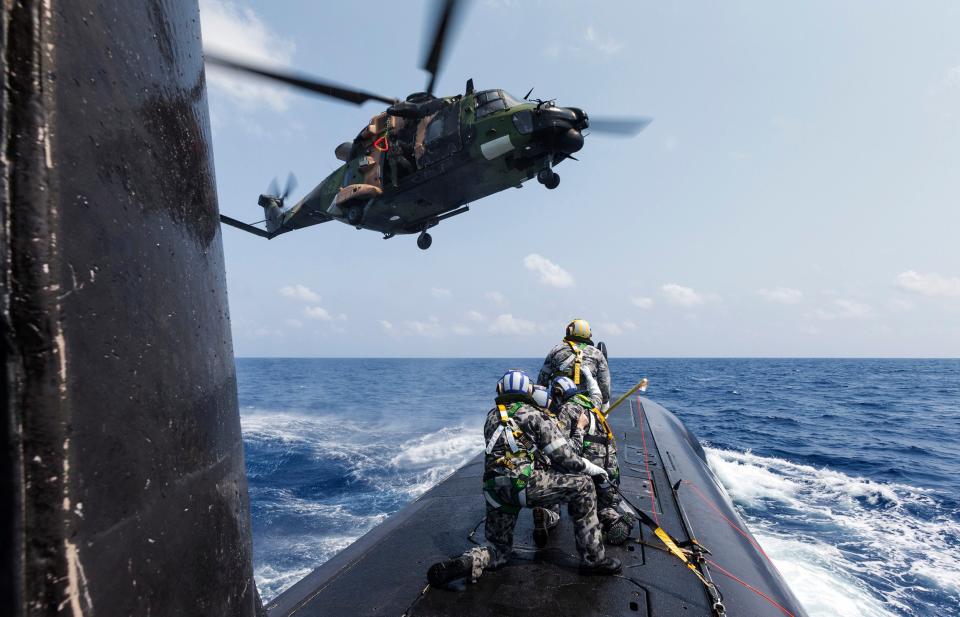
Australia finally had had enough of the NH90 and went cap in hand to Washington sometime in the second half of 2021, with a formal letter of request to the U.S. State Department for an urgent delivery of 40 new UH-60Ms in standard U.S. Army specification.
The December 2021 public announcement of the early retirement of the NH90 was, however, not the end of Australia’s failed relationship with the aircraft. A change of government in late May 2022 saw a brief glimmer of hope for the European helicopter emerge as Australia’s new minister of defense publicly mocked the new Black Hawk buy to journalists.
But the political intervention was short-lived.
The Australian Army, the ADF’s only operator of the NH90 after the Royal Australian Navy had warehoused their airframes in April 2022, came out swinging during the Australian Senate Foreign Affairs, Defense and Trade Legislation Committee hearings last November, vigorously defending its decision to retire the NH90 decades early.
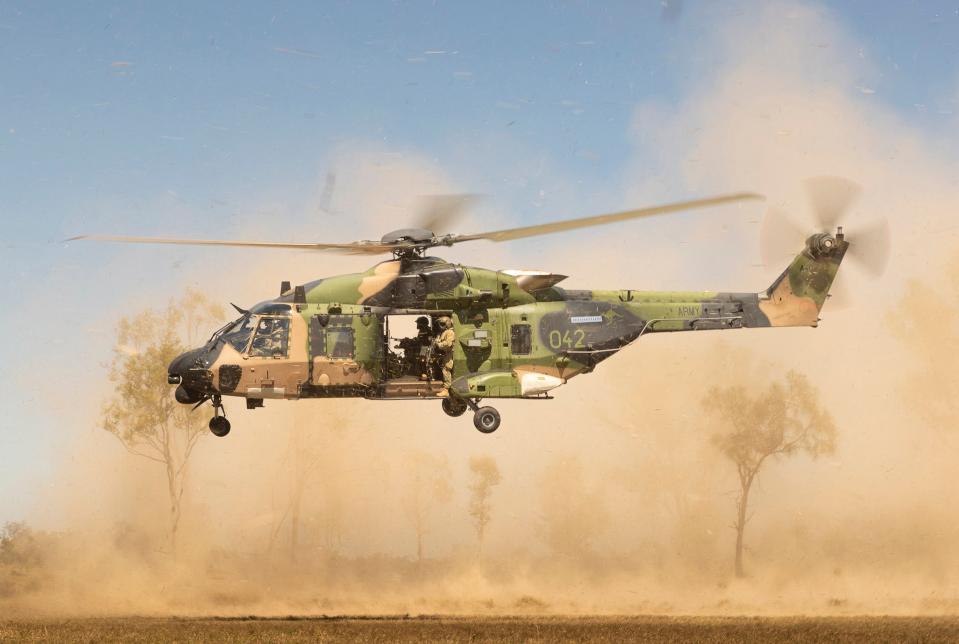
Australia’s erudite new Chief of Army Lt. Gen. Simon Stuart and his entourage effectively slaughtered the NH90, pointing out that the cost of buying 40 new fully operational and immediately deployable UH-60M Black Hawks and flying them for a decade was far cheaper than retaining the non-operational and non-deployable NH90 in service. At this point, the NH90 was costing an astonishing $32,000 (AUS$48,000) per flight hour — three times more than new, actually flyable UH-60Ms.
Lt. Gen. Stuart’s arguments did the trick, convincing the new Albanese government to follow through with the Black Hawk acquisition alongside a long overdue reorganization of the Australian Army Aviation’s order of battle and basing arrangements.
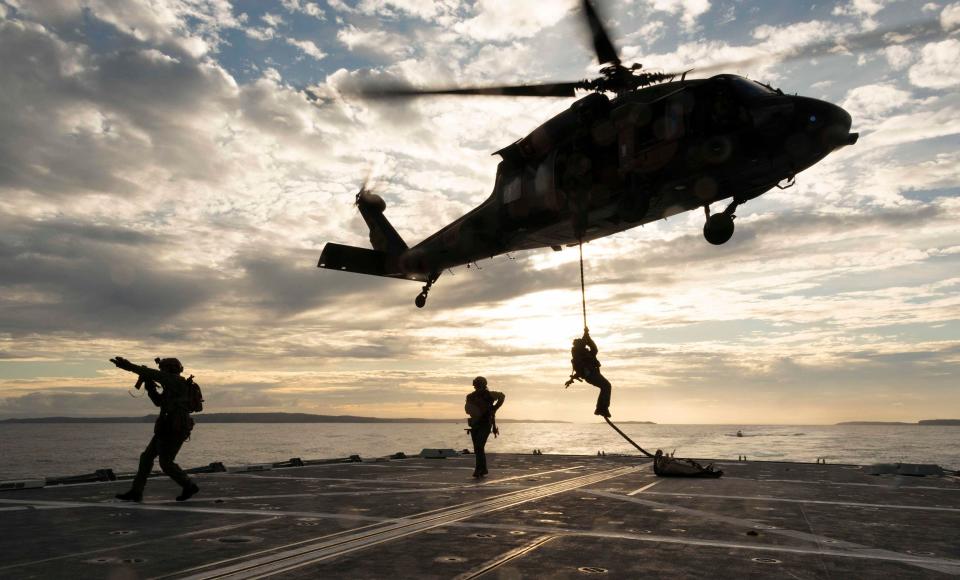
The U.S. State Department concurred, approving Australia’s urgent request for UH-60Ms with three aircraft delivered in July this year and three more due by the end of the year, to be followed by the balance of 34 aircraft over the next two years.
While the Australian Defense Force was the first to actually start flying a replacement helicopter for its NH90s, the Royal Norwegian Air Force was the first to formally lose patience with the type, grounding its entire fleet of 14 NH90s, primarily in the naval NATO Frigate Helicopter or NFH configuration, in June 2022 and demanding a refund.
https://www.twitter.com/endrelunde/status/1535136345739370496?s=20
Sweden and Belgium are also unhappy NH90 customers, both seeking replacements after years of costly failure to get the helicopter to sustainably achieve any sort of acceptable availability or capability.
In January 2022 the Belgian Armed Forces announced their intention to replace their less than 10-year-old NH90 fleet with 15 new helicopters acquired under its Light Utility Helicopter Program.
The Swedish Armed Forces followed in November 2022, announcing their intention to acquire replacements for both the NH90 TTH and NH90 NFH versions — designated HKP 14E and HKP 14F in Swedish Air Force service — with new helicopters, likely UH-60M Black Hawks and MH-60R Seahawks.
https://www.twitter.com/flyingjok/status/1587460552498057216?s=20
The German Bundeswehr has revealed its own issues with the NH90 Tactical Transport Helicopter, with the German Generalinskpekteur der Bundeswehr (Chief of Defense) publishing two extremely critical reports into the German Army’s similarly over-budget and under-available fleet.
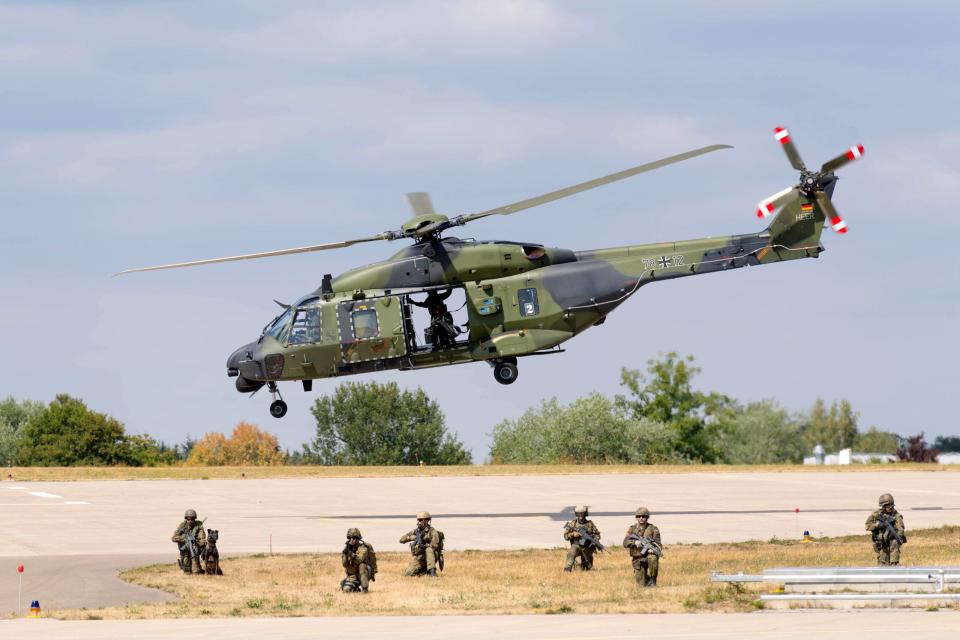
In every case, the military aviation authorities involved cite the same issues with their NH90 fleets — woeful availability, lack of spare parts support, long timelines for contractor system repairs and return to service and extreme cost of ownership.
Australian, Norwegian, Belgian, Swedish, and German issues with the NH90 helicopter have been well publicized, but NH90s are still flying with the Royal New Zealand Air Force, the Royal Netherlands Navy, the French Army and Navy, the Italian Army and Navy, the Greek Army and Navy, the Spanish Army and Navy, the Royal Air Force of Oman, and the Qatar Emiri Air Force.
https://www.twitter.com/NHIndustriesSAS/status/1535295423832801280?s=20
With 45 surviving helicopters on strength, Australia, however, had an especially punishing experience, as it was flying one of the largest fleets of NH90s and these were assigned two critical missions that could not be ‘worked around’ (special operations aviation support and naval logistic support), forcing them to take urgent action.
Unfortunately for Australia, the 15-year service of the NH90 Tactical Transport Helicopter not only consumed vast sums of military funds but its final operations were marked with tragedy and the loss of four aviators during Talisman Sabre 2023.
Now, it seems, Australia’s nightmare with the NH90 has finally come to a close.
Contact the editor: thomas@thedrive.com

